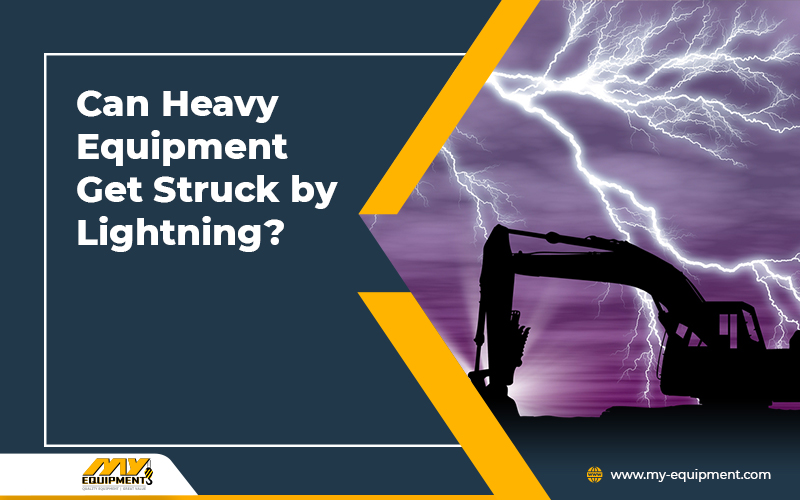How Lightning Works
Typically, lightning can be observed during a thunderstorm. When two electrically charged regions temporarily equalize themselves, a sudden electrostatic discharge is produced which is called lighting. During a thunderstorm, the air between the clouds serves as an insulator between two oppositely charged particles. As the storm intensifies, one of these charges overpowers the other, and a bolt of lightning is released to neutralize this excessive charge.
When this lightning strikes heavy equipment, the worker inside is generally safe. When lightning strikes heavy equipment, the outer metallic surfaces carry most of the electricity. The worker inside is likely protected by the creation of a partial faraday cage. This happens mostly with larger equipment such as cranes, bulldozers, and backhoes, among others. Smaller equipment with smaller tires can react differently to the intense electrical charges, resulting in the complete destruction of the vehicle and severe injury or death of the person inside.
Effects of Lightning on the Construction Sector
Lightning is a very dangerous natural force that can kill or severely injure people who get in contact with it. There are different types of lightning, but the most dangerous one is cloud-to-ground lightning. Studies reveal that cloud-to-ground lightning occurs 20 to 25 million times annually in the US alone. Close to 50 people die every year from lightning accidents, and more than 250 people suffer from permanent disabilities caused by lightning.
Lightning is a major occupational hazard for workers in the construction industry. Roughly 20% of the fatalities caused by lightning are observed in the construction sector. Operators of heavy equipment and agriculture equipment are significantly more exposed to lightning. Tall objects such as cranes, hoists, and ladders generally attract lightning first.
The effects of lightning on heavy equipment can vary from a minute scratch to complete destruction of the equipment. The most common forms of damage caused by lightning to heavy equipment include pitting, arcing, and burning of the machine’s exterior. However, in some cases, the complete destruction of vehicles is also observed. Another common type of damage caused by lightning is the destruction of equipment wiring and electrical system.
Safety Measures Against Lightning for Construction Workers
Below are some safety measures that can help construction workers in case lightning strikes.
-
Vehicle as Shelter
During a thunderstorm or lightning, the heavy equipment operator should shut down the equipment, close the doors and windows, and sit with their hands in their lap until the storm passes. The reason why they should put their hands in their laps is to avoid contact with the metal surface. During closed-in lighting, the operator, under any circumstances, should evacuate the equipment to find another form of shelter. The moment an operator touches the ground in the event of lightning, voltage might pass through them from the road, severely injuring them.
-
Phone Safety
In the event of lightning or thunderstorm, the operator should avoid touching or using cell phones or any corded device. Once the storm passes, the operator may then use a wireless cell phone to get help.
-
Waiting for the Storm to Pass
A standard operating procedure in the event of lightning or storm is that workers need to wait for 30 minutes in their shelter after hearing the last sounds of thunder before exiting the shelter.
-
Emergency Action Plan (EAP)
Employers should ensure that a written emergency action plan (EAP) is provided to workers and also kept on the jobsites. This EAP should include a lightning safety protocol for workers. Training on the EAP should also be provided and made mandatory for all workers.
-
Lightning warning systems
Employers should make use of lightning warning or detection systems. These systems prove to be very useful in preventing accidents.


 1400 Broadfield Blvd, Houston, TX 77084,
USA.
1400 Broadfield Blvd, Houston, TX 77084,
USA.